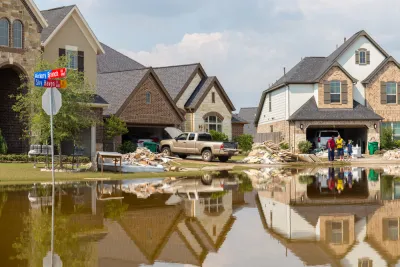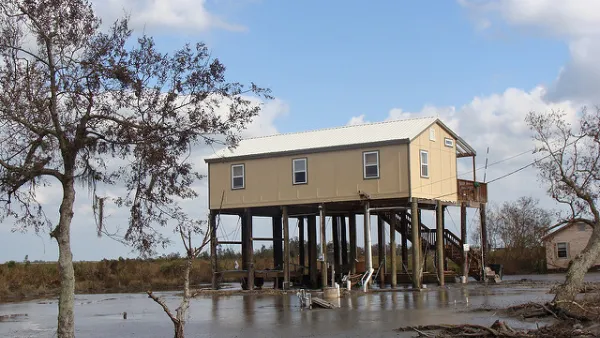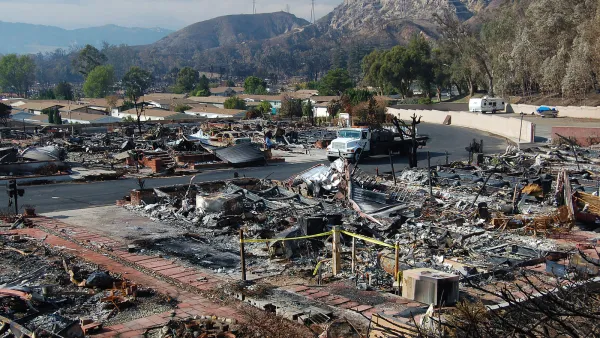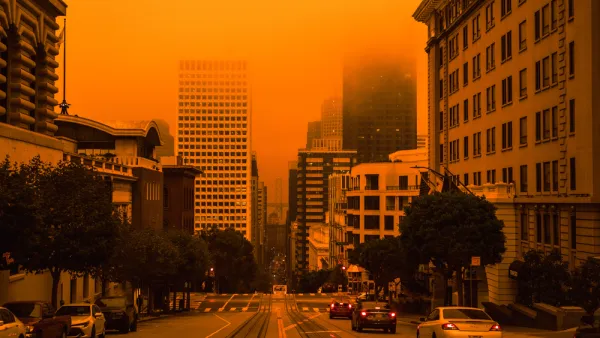Americans are fleeing the effects of climate change by the millions. Expect the number of climate refugees to continue to grow.

With the West on fire and hurricane season sending repeated blows to the coastal United States, a pair of recent articles have explored the already reality of residents permanently fleeing their homes to escape the worst of climate change.
"The fires will eventually end, but for many residents of the region, the disaster is just beginning," writes Joel Mathis for The Week. "The climate refugee crisis has come to America."
Americans aren't used to thinking of crises in the United States in terms of refugees, but the data to back up the narrative is already conspicuous. Mathis writes:
In fact, climate migration was already well underway in the United States before the latest round of fires. The Urban Institute estimates more than 1.2 million Americans left their homes in 2018 for climate-related reasons — some were escaping long-term problems, but others were fleeing short-term disasters that became permanent displacements. Sea level rise could force millions more coastal residents to move in coming years. People won't keep living in places where it is impossible to live. Sooner or later they will choose — or be forced — to leave their homes and find somewhere safer.
A separate article by Tim McDonnell, published by Quartz earlier in the month, focuses specifically on the challenges facing residents of coastal communities in Louisiana, and the communities that have grown with climate refugees, not just the communities being gutted by population loss. In St. Tammany parish, the city has been completely transformed by the steady stream of new residents since Hurricane Katrina. "That growth has not waned. St. Tammany is now one of the fastest-growing parishes in the state. Its population has quadrupled since 1970, to a quarter million, and is expected to double by 2030," writes McDonnell.
FULL STORY: The climate refugees are here. They're Americans.

Analysis: Cybertruck Fatality Rate Far Exceeds That of Ford Pinto
The Tesla Cybertruck was recalled seven times last year.

National Parks Layoffs Will Cause Communities to Lose Billions
Thousands of essential park workers were laid off this week, just before the busy spring break season.

Retro-silient?: America’s First “Eco-burb,” The Woodlands Turns 50
A master-planned community north of Houston offers lessons on green infrastructure and resilient design, but falls short of its founder’s lofty affordability and walkability goals.

Test News Post 1
This is a summary

Analysis: Cybertruck Fatality Rate Far Exceeds That of Ford Pinto
The Tesla Cybertruck was recalled seven times last year.

Test News Headline 46
Test for the image on the front page.
Urban Design for Planners 1: Software Tools
This six-course series explores essential urban design concepts using open source software and equips planners with the tools they need to participate fully in the urban design process.
Planning for Universal Design
Learn the tools for implementing Universal Design in planning regulations.
EMC Planning Group, Inc.
Planetizen
Planetizen
Mpact (formerly Rail~Volution)
Great Falls Development Authority, Inc.
HUDs Office of Policy Development and Research
NYU Wagner Graduate School of Public Service




























